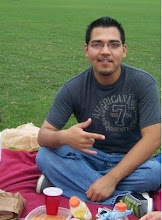(Original title: El eclipse)
Author: Augusto Monterroso
Translated by: me
When friar Bartholomew Arrazola felt lost he admitted that now nothing could save him. The powerful jungle in Guatemala, implacable and immovable, had imprisoned him. Faced with his ignorance of topography he peacefully sat down to await his death. He wanted to die there, totally hopeless, isolated, with his mind fixed in distant Spain, particularly in the Abrojos Convent, where Charles 5th had once consented to descend from his eminence to tell him that he was confident of the religious zeal of his redeeming labor.
When he woke up he found himself surrounded by a group of indifferent-looking indigenous people that were preparing to sacrifice him in front of an altar; an altar that Bartholomew thought was the bed where he would finally rest from his fears, his destiny, from himself.
Three years in the country had granted him an average grasp of the native tongues. He tried something. He spoke some words that were understood.
Then, in him flourished an idea that he judged worthy of his talent and universal culture, and of his arduous knowledge of Aristotle. He remembered that a total solar eclipse would occur on that day. Thus, he secretly set out to use that knowledge to deceive his opressors and save his life.
"If you kill me," he said, "I can make the sun high above turn black. "
The indigenous people stared at him and Bartholomew surprised the skepticism in their eyes. He saw a small council convene and he confident but scornfully waited.
small council convene and he confident but scornfully waited.
Two hours later Brtholomew Arrazola's heart vehemently spurted blood on the stone of sacrifices (bright under the dull light of an eclipsed sun), while one of the indigenous people impassive and calmly recited, one by one, the numerous dates in which lunar and solar eclipses would occur. Astronomers from the community had already predicted and written them down without the valuable help of Aristotle.
[Justice has been served lol]
Author: Augusto Monterroso
Translated by: me
When friar Bartholomew Arrazola felt lost he admitted that now nothing could save him. The powerful jungle in Guatemala, implacable and immovable, had imprisoned him. Faced with his ignorance of topography he peacefully sat down to await his death. He wanted to die there, totally hopeless, isolated, with his mind fixed in distant Spain, particularly in the Abrojos Convent, where Charles 5th had once consented to descend from his eminence to tell him that he was confident of the religious zeal of his redeeming labor.
When he woke up he found himself surrounded by a group of indifferent-looking indigenous people that were preparing to sacrifice him in front of an altar; an altar that Bartholomew thought was the bed where he would finally rest from his fears, his destiny, from himself.
Three years in the country had granted him an average grasp of the native tongues. He tried something. He spoke some words that were understood.
Then, in him flourished an idea that he judged worthy of his talent and universal culture, and of his arduous knowledge of Aristotle. He remembered that a total solar eclipse would occur on that day. Thus, he secretly set out to use that knowledge to deceive his opressors and save his life.
"If you kill me," he said, "I can make the sun high above turn black. "
The indigenous people stared at him and Bartholomew surprised the skepticism in their eyes. He saw a
Two hours later Brtholomew Arrazola's heart vehemently spurted blood on the stone of sacrifices (bright under the dull light of an eclipsed sun), while one of the indigenous people impassive and calmly recited, one by one, the numerous dates in which lunar and solar eclipses would occur. Astronomers from the community had already predicted and written them down without the valuable help of Aristotle.
[Justice has been served lol]





